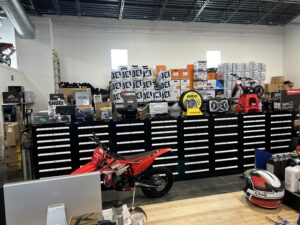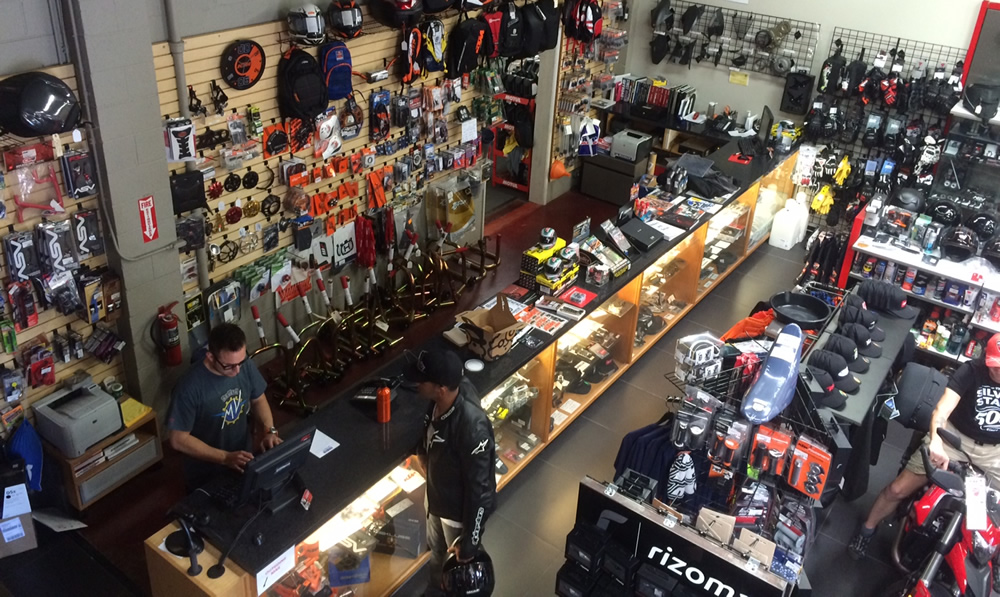Store the most effective MX Parts NZ for Your High-Performance Bike
Store the most effective MX Parts NZ for Your High-Performance Bike
Blog Article
Understanding the Vital Parts of a Bike: A Comprehensive Guide for Lovers
For motorcycle enthusiasts seeking to boost their riding experience and guarantee their bikes run smoothly, understanding the essential parts of a motorcycle is critical. Each aspect, from the engine's complex operations to the critical function of the stopping systems, not just influences efficiency however additionally safety and security and convenience. This guide will go through the fundamental parts that every biker should recognize with, making it possible for educated selections in both maintenance and prospective upgrades. As we start this expedition, one must ask: exactly how does each part communicate to develop the smooth adventure every fanatic seeks?
Engine Components

The camshaft plays an important function in managing the timing of the engine's valves, making certain the accurate opening and closing required for effective gas and air consumption, in addition to exhaust expulsion. This timing is crucial to keeping optimal engine performance and effectiveness. In addition, the carburetor or fuel shot system, depending on the motorbike model, is in charge of blending air with gas in the correct ratio for combustion.
The cooling system, either air or liquid-based, functions to keep the engine's temperature within operational restrictions, avoiding getting too hot and ensuring longevity - motorbike shop. Each component, carefully created and incorporated, adds to the seamless procedure of the engine, defining the motorcycle's power result and total efficiency
Transmission System
Indispensable to the motorcycle's performance, the transmission system makes certain efficient power transfer from the engine to the wheels. This system comprises several crucial parts, including the clutch, transmission, and last drive, each playing an essential role in converting the engine's power right into activity. The clutch, commonly run by a hand lever, serves to engage and disengage the engine from the transmission, permitting smooth equipment adjustments and regulated velocity.
The transmission, typically referred to as the transmission appropriate, consists of a set of gears that bikers can manually move with to adjust the bike's rate and torque outcome. These equipments are set up in a sequence that allows the motorcycle to speed up efficiently and preserve optimal engine efficiency throughout various speeds. Most bikes make use of a sequential gearbox, requiring the cyclist to change gears in a predetermined order.
Braking Mechanisms
While recognizing the transmission system is crucial to using a motorbike's power, just as essential is the capability to control and quit that power effectively, which is where braking mechanisms enter play. Brakes are crucial for safety and security and efficiency, offering the rider with the essential control to navigate various surfaces and problems. Usually, motorcycles feature two kinds of stopping systems: disc brakes and drum brakes.
Disc brakes are a lot more common in contemporary motorbikes as a result of their exceptional performance. They contain a brake disc, caliper, and pads. When activated, the caliper presses the brake pads against the rotating disc, converting kinetic energy right into warm, consequently slowing the wheel. This system uses much better warmth dissipation, consistent performance, and enhanced stopping power, specifically in wet problems.
On the other hand, drum brakes, though less typical, are still located in some motorcycles. They function by pressing brake footwear against the inner surface of a drum affixed to the wheel. While generally less reliable in heat dissipation and quiting power, drum brakes are easier and extra cost-effective.
Comprehending these stopping systems' subtleties enables cyclists to preserve their motorcycles appropriately and appreciate the engineering that ensures reliable and risk-free quiting.
Suspension and Guiding
Suspension and steering systems are crucial components that dramatically influence a motorbike's handling and ride comfort. The shock absorber, being composed of forks at the front and shock absorbers at the back, takes in road irregularities, enhancing stability and control. Front forks, upside down or typically telescopic, compress and rebound to reduce effects, while back shock absorbers preserve tire call with the road, critical for grip and safety and security.
Guiding, centered around the handlebars, connects the cyclist to the motorbike's directional control. The guiding head bearings make sure smooth procedure, permitting specific ability to move. Proper positioning and maintenance of these bearings are crucial for foreseeable guiding reaction and lowering cyclist fatigue.
The suspension's adjustability is another critical aspect; preload, damping, and rebound setups enable modification to match various riding conditions and designs. This adaptability is necessary for optimizing efficiency, whether navigating metropolitan streets or tackling tough routes. Developments like digital shock absorber supply real-time modifications, improving adventure high quality across diverse surfaces.

Electrical Solutions
After making certain a controlled and smooth adventure with efficient suspension and guiding systems, interest transforms to the electric systems, an essential element of contemporary motorbikes. These systems play a critical duty not just in starting the engine but additionally in powering numerous elements that improve the capability and security of the motorcycle.
At the heart of a motorcycle's electric system is the battery, which shops electric power essential for beginning the engine and powering auxiliary systems - mx gear nz. The generator or generator, paired with the rectifier-regulator, makes sure the battery remains billed while the bike functions, transforming mechanical energy into electrical power and keeping voltage levels
The ignition system, one more vital part, is liable for sparking the air-fuel mixture in the engine's cylinders. Modern motorcycles often make use of a digital ignition system, supplying better efficiency and reliability contrasted to traditional systems.
Lighting systems, consisting of headlights, tail lights, and indicators, are additionally vital, making certain exposure and safety and security for the rider. Additional electronic parts such as sensing units, control systems, and displays add to sophisticated features like gas shot management, anti-lock braking systems (ABS), and electronic control panels, better enhancing the riding experience.
Final Thought
A thorough comprehension of a bike's necessary elements, consisting of the engine, transmission system, braking devices, suspension, guiding, and electrical systems, is crucial for lovers aiming to maximize convenience, safety, and efficiency. Mastery of these components permits informed choices regarding maintenance and upgrades, eventually boosting the riding experience. By integrating this expertise, riders can guarantee their bikes operate at peak effectiveness and integrity, motorbike shop thereby taking full advantage of both enjoyment and long life of their vehicles.
For motorcycle lovers looking to boost their riding experience and ensure their bikes run efficiently, understanding the necessary components of a motorbike is extremely important.Essential to the bike's functionality, the transmission system guarantees effective power transfer from the engine to the wheels.While recognizing the transmission system is vital to harnessing a motorcycle's power, equally crucial is the capacity to control and stop that power efficiently, which is where stopping systems come into play. Commonly, motorcycles feature two types of braking systems: disc brakes and drum brakes.
A thorough understanding of a motorcycle's important elements, consisting of the engine, transmission system, stopping devices, suspension, guiding, and electric systems, is crucial for enthusiasts intending to maximize security, performance, and comfort.
Report this page